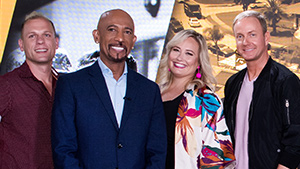The Emoji Evolution: How Millennials and Gen Z Use Emojis in Unique Ways
July 21, 2023

In the age of digital communication, emojis have become an integral part of expressing emotions, thoughts, and reactions in text messages and social media. However, it’s fascinating to discover that different generations, particularly Millennials and Gen Z, have their own distinct ways of using these tiny graphical icons. Let’s explore the evolving world of emojis and how they are interpreted and employed by these two generations.
Millennials and Emojis
According to a report by The National News, Millennials have a more straightforward approach to using emojis. They tend to stick to the classic and widely recognized symbols, using them to convey basic emotions like happiness, sadness, or humor. Emojis for food, travel, and various activities are also popular among Millennials, reflecting their diverse interests and lifestyles. BuzzFeed’s research supports this notion, highlighting that Millennials prefer using emojis to enhance their text messages and add a touch of playfulness to their conversations. For example, the emoji with tears while laughing is used for something extremely funny.
Gen Z’s Unique Emoji Language
On the other hand, Gen Z has taken emoji usage to a whole new level. The Washington Post reports that this tech-savvy generation has developed a unique emoji language with hidden meanings and nuances. Gen Z often uses emojis creatively, combining multiple icons to form complex expressions that only their peers can decipher. These emoji combinations serve as inside jokes and provide a sense of belonging within their social circles. This generation tends to use emojis as visual cues, replacing words or phrases to communicate in a more concise and visually engaging manner. The skull emoji is a perfect example of this as it means “dead,” but not in the “life-less” way. Rather, it signifies that whatever was sent was so funny, it “took them out.”
Emojis in the Workplace
Interestingly, the use of emojis extends beyond personal conversations for Gen Z. The Washington Post’s research delves into how this generation incorporates emojis into their professional lives. Gen Z views emojis as a tool for efficient communication, particularly in remote work environments and digital collaborations. Emojis help convey tone, clarify intent, and foster a more casual and relatable work atmosphere. For instance, a simple thumbs-up emoji can make the person on the receiving end as if something is wrong. The reason for this is that many associate a thumbs up with an attempt at passive-aggressive communication.
As the use of emojis continues to evolve, Millennials and Gen Z showcase distinct approaches to incorporating these digital symbols into their communication. Do you want to age yourself? Use the crying-laughing emoji. Or, if you’re like me, someone from the cool kids’ club, send a skull.

















Comments